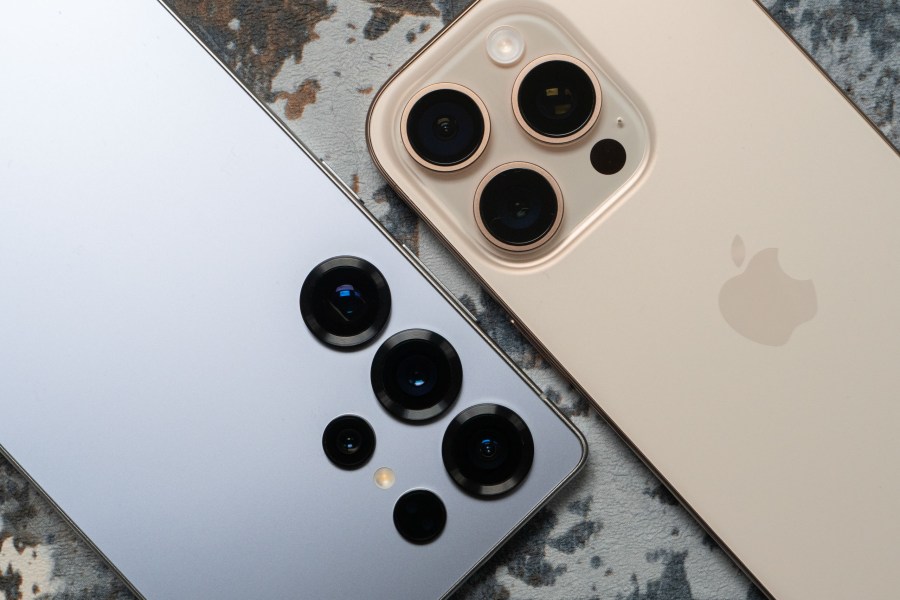It’s safe to say that both the newer Samsung Galaxy S25 Ultra and the iPhone 16 Pro/iPhone 16 Pro Max sit squarely in our list of the best smartphones for photographers.
With both, you will find that you can enjoy superb image quality across a range of shooting conditions. But, there has to be one that is better than the other, right?
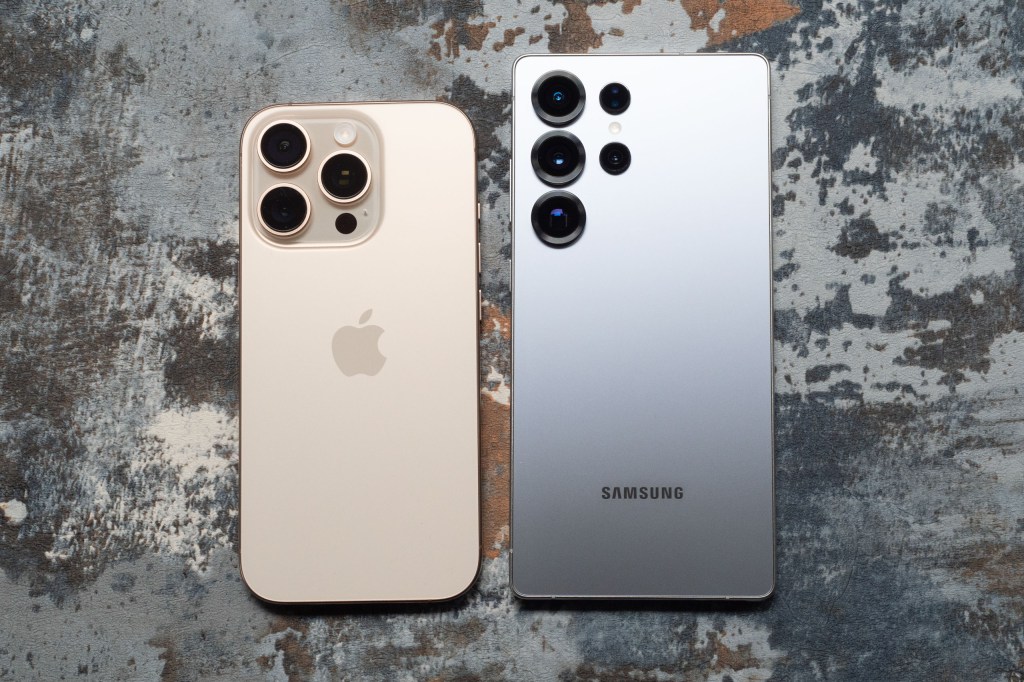
To find out which one produces the best goods, I used both models in the same conditions to find out how each got on. I’ve been using the smaller iPhone 16 Pro, but the larger iPhone 16 Pro Max has exactly the same camera setup, so it can be seen as a comparison with that model too. Where there are differences in screen size, I’ve explained those below.
Samsung Galaxy S25 Ultra vs iPhone 16 Pro: Specs
In the table below I’ve included the specs which are likely to be of most interest to photographers. I’ve bolded those which are – on paper at least – better. There’s actually a decent amount of bold on both sides of the table.
In terms of the cameras, you get four with the S25 Ultra, and only three with the iPhone 16 Pro Max. The main sensor for the S25 Ultra is a whopping 200MP, compared to the 48MP device of the iPhone 16 Pro – however it’s worth pointing out that the default output size for the iPhone is 24MP, twice that of the 12MP output of the Samsung.
Both phones have an ultrawide lens. The S25 Ultra now has a higher resolution sensor than the iPhone 16 Pro Max’s – it’s about the only major thing to be improved when compared to the Samsung Galaxy S24 Ultra. For the third lens, the iPhone has a 12MP 5x f/2.8 lens, while the Samsung is toting a 10MP 3x f/2.4 lens. The iPhone would seem better for there, but remember there’s an additional fourth Samsung lens, which is a 50MP 5x f/3.4 device.
| Samsung Galaxy S25 Ultra | iPhone 16 Pro Max |
|---|---|
| 200MP f/1.7 main camera, OIS, 12MP output, 24mm | 48MP f/1.78 main camera, OIS, 24MP output, 24mmm |
| 50MP f/1.9 ultrawide camera, 12MP output, 13mm | 48MP f/2.2 ultrawide camera, 12MP output, 13mm |
| 10MP f/2.4 3x telephoto camera, 67mm | 12MP f/2.8 5x telephoto camera, 120mm |
| 50MP f/3.4, 5x telephoto camera, 111mm | No fourth camera |
| 12MP f/2.2 selfie camera, AF | 12MP f/1.9 selfie camera, AF |
| 8K 30fps | 4K 120fps video |
| 6.9-inch 3120 x 1440 pixels, 2600 nits brightness | 6.9-inch XDR OLED Super Retina 2368 x 1320 pixels, 2000 nits brightness OR 6.3-inch XDR OLED Super Retina 2622 x 1206 pixels, 2000 nits brightness |
| Samsung Galaxy AI, Qualcomm Snapdragon 8 Elite | Apple Intelligence, A18 Pro processor |
| 31 hour battery life, wireless and Fast (45W) charging available | 33 hour battery life,wireless and Fast (20W) charging available |
| 256/512/1TB storage | (128GB – iPhone 16 Pro only) 256/512/1TB storage |
| 162.8 x 77.6 x 8.2mm, 218g | 163 x 77.6 x 8.25mm, 221g OR 149.6 x 71.5 x 8.3mm, 199g |
Take a look at the size of those screens. Both the iPhone 16 Pro Max and the Samsung Galaxy S25 Ultra are big. Some will like that, others won’t. The Samsung is brighter and higher resolution – so it’s got that going for it.
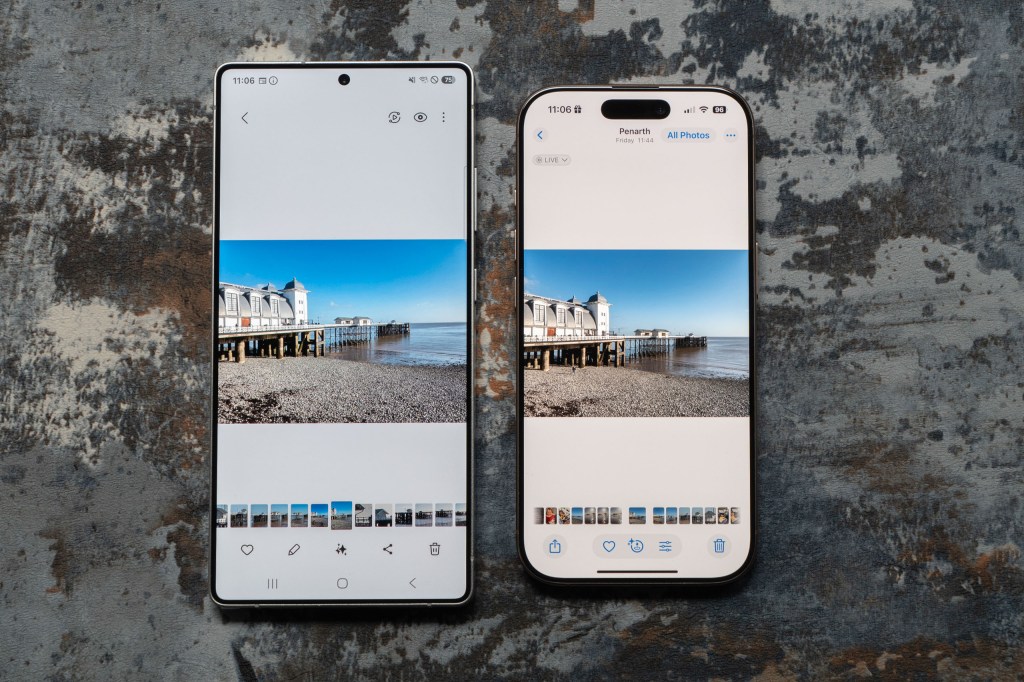
In terms of handling, both are quite cumbersome, but they do show off your photos and videos brilliantly. Personally, I prefer a much smaller device, and therefore having that option available with the iPhone makes it a much more attractive proposition for me – but if you’d be happy with a big screen, then the Samsung is probably better.
Other elements to think about include how you use and operate the camera. The iPhone 16 Pro Max has a “Camera Control” button for example, which gives you a physical way to release the shutter, as well as zoom and switch lenses. Disappointingly, Samsung has removed the Bluetooth connectivity from the bundled S Pen for the S25 Ultra, meaning you can no longer use it for remote trigger release – something which was very appealing before.
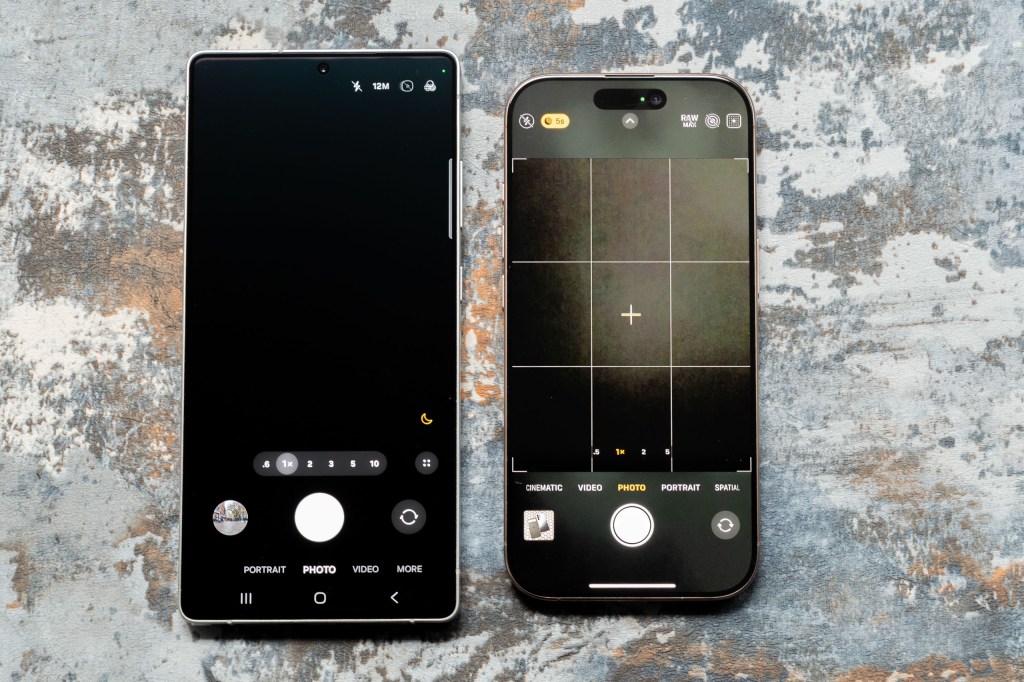
Looking at the native camera apps of both, the iPhone’s is a bit simpler. This isn’t necessarily a bad thing, but it would be nice to see some more pro options available. The Samsung has not one but two pro modes, so if you’re somebody who likes to take greater control it might appeal to you more.
Both the phones have AI editing tools, which are quite interesting to use. The Samsungs is a little more comprehensive, but both are great for simple jobs such as removing photobombers and straightening landscapes.
Samsung Galaxy S25 Ultra vs iPhone 16 Pro: Image Quality
I took photographs with the both the iPhone 16 Pro Max and the Samsung Galaxy S25 Ultra in a number of different situations to assess the image quality of both.
Note, the Samsung Galaxy S25 Ultra is on the left every time, and the iPhone 16 Pro is on the right every time.


The images from both models are great in this landscape scene. However, the Samsung has produced a brighter, more vibrant result. The iPhone is closer to reality. Neither is “worse” than other, but it depends on your preference – for those who like a punchier look, the Samsung clearly wins. That said, you can use different Picture Styles or Digital Filters with either model, so you can pretty much get colours to look however you want. Both have plenty of detail, especially when looking at images at normal sizes on your phone or screen, or for printing at normal sizes.


Again here we can see a pretty big difference in the colours between the two models. As for detail, they’re about on a par with each other.


Here is the Samsung 3x lens, which the iPhone doesn’t have. As a result, I’ve compared it against the 2x crop option found in the iPhone’s native camera app, which crops from the centre of the 1x camera’s sensor. They both are pretty good, although neither are of course as good as the 1x option. Shooting in this way is very good in bright light, and I’d be happy to use either of these images.


Both of the models have a 5x zoom lens, but as we can see in the specs table, there are some noticeable differences. Both produce pretty good results if you’re only looking at images on your phone screen, but there’s missing detail on both when you zoom in. It’s likely we’ll see a bigger difference when we look at the low light options, as the Samsung lens has a much narrower aperture.


With both models there are digital zoom options. The Samsung Galaxy S25 Ultra has a 100x option, which is four times the length of the 25x offered by the iPhone. But, it’s fair to say that the Samsung’s 100x zoom is little more than a marketing gimmick, so it shouldn’t really be used a pro. At 25-30x zoom with either model you get just about useable results if you’re desperate, but I’d probably stick with 10x on most occasions. Both the 10x options shown here are OK, but the Samsung has better and clearer details.


I’d say neither of those phones are the best smartphones for macro. That prize should be given to something which uses the telephoto lens for macro work, such as the Xiaomi 14 Ultra or the Vivo X200 Pro. Instead, both of these models rely on the ultrawide lens for close-ups. There’s OK results from both, but the Samsung is better in this example. Shooting outside in very bright light produces closer results on the whole.


It’s a very closely run thing between the two shots here. In low light, you’ll get the best results when you use the 1x camera, which is pretty standard across all smartphones. The colours are marginally more pleasing from the Samsung, but the iPhone appears to have a tough more detail in the shadow areas – but this is being really nitpicky, and I’d actually put both of them as about equal.


The ultrawide camera has been improved for the S25 Ultra and that has paid off in low light. Here the results are better than the iPhone’s quite noticeably, with more detail and better colour rendition. The Samsung now has a wider aperture lens for the ultrawide, which is probably what’s helping to produce the good results.


Here, the iPhone has produced a much better result from its 5x lens. However, they’re both on the smudgy side. I’d probably be just about happy to use the iPhone version as a “record shot”. Beyond 5x, I wouldn’t generally use digital zooming options in very low light like the scenario here, but it’s a bit better if there’s more artificial light in the scene.


Both the Samsung and the iPhone have dedicated portrait modes which give you the option to shoot at 1x, 3x or 5x with a blurred background. I like the fact that with the iPhone, it will automatically recognise a portrait subject (human, cat or dog) even when shooting in the standard Photo mode, giving you the ability to add the blurred background effect later. I can’t tell you how many times I’ve used that when quickly snapping a picture of my daughter or my dachshund (sometimes both together). Sadly, that’s not something the Samsung offers – which is a shame as it’s something you can do with the Google Pixel series.
Looking purely at the results though, both are pretty good here. The iPhone gives us warmer, arguably more flattering tones, but there’s perhaps a smidge more detail with the Samsung – it’s a very close run thing though, and I’d be very happy to use either.
Samsung Galaxy S25 Ultra vs iPhone 16 Pro: Price and Value for Money
It’s safe to say that neither of these phones are for those on a strict budget. Which is cheaper depends on the size variant, and in some cases, the location where you’re buying the phone.
The cheapest that you’ll be able to buy a Samsung S25 Ultra for is $1299/£1249, for the 256GB model. That’s more expensive than the cheapest iPhone 16 Pro Max, which is available for $1199/£1199. On top of that, if you’re happy to go with a smaller phone – but keep the image quality the same – you can save even more money by going for the iPhone 16 Pro, which starts at $999/£999 (128GB – you can’t get the Max in 128GB).
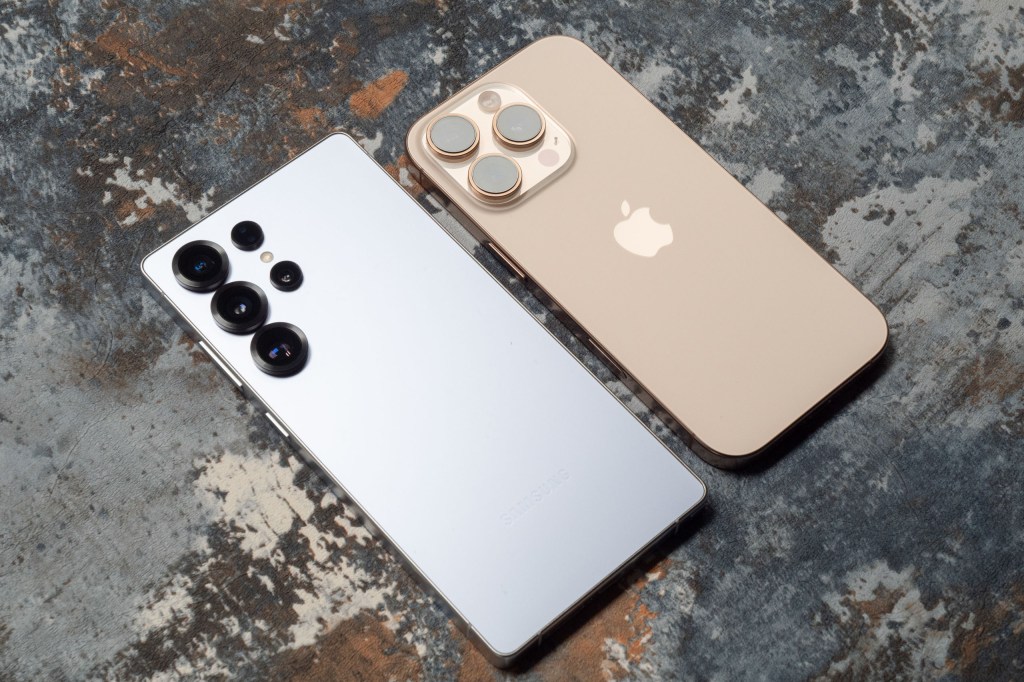
However, things do switch around a bit if you look at different storage options. The 512GB iPhone 16 Pro Max is $1399/£1399, which is a touch more expensive in the UK than the £1349 for the Samsung, though in the US, it’ll cost you $1419.
Again, at the 1TB end of the scale, it’s $1599/£1599 for the iPhone 16 Pro Max, compared to $1659/£1549 for the Samsung Galaxy S25 Ultra.
The iPhone 16 Pro/Max has been out for a few months, so it’s possible you’ll be able to find one for sale on a second-hand website for a bit less.
You should find that both of these brands hold their value well if you want to resell them in the future – such as when you upgrade. However, it’s usually the case that an iPhone will fetch a little more.
Samsung Galaxy S25 Ultra vs iPhone 16 Pro: Verdict
Comparing these two models shows that, once again, they are both excellent performers, and both do a good job across a range of different shooting scenarios.
Which you like the best may come down to personal preference. For example, I quite like the more muted / realistic colours of the iPhone, but I can very easily see why the more vibrant Samsung colours would be appealing.
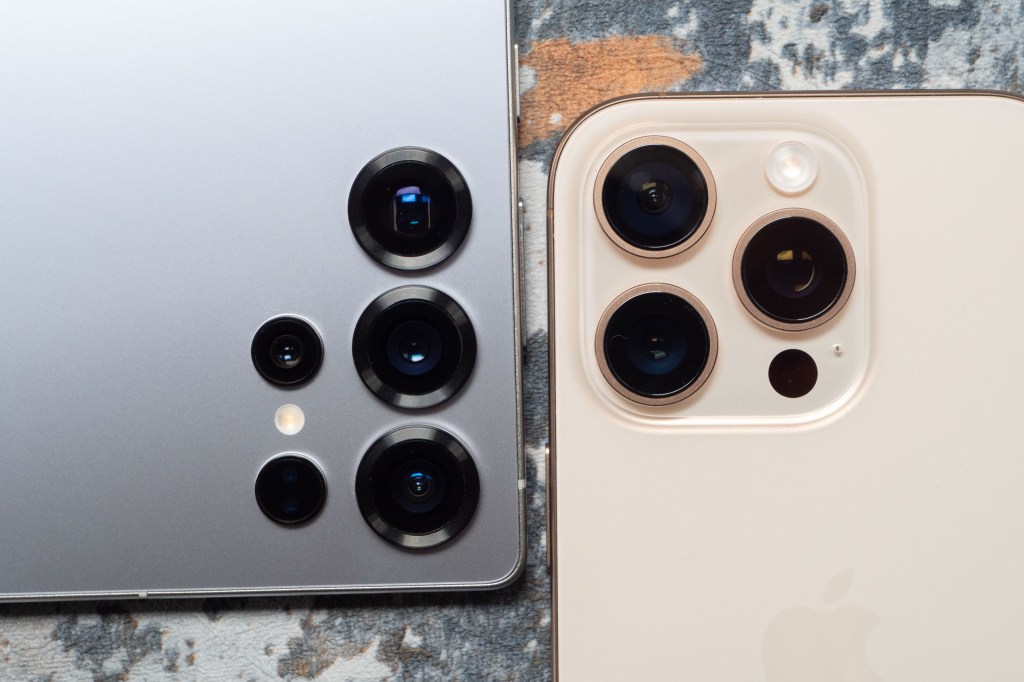
Elsewhere, both do well in low light, with the Samsung doing better with the ultrawide lens, but the iPhone’s telephoto option producing better shots.
So what about handling. Here there’s more differences to take note of. Both the iPhone 16 Pro Max and the Samsung Galaxy S25 Ultra have extraordinarily large screens. If you like that, then great news, but if you don’t, then you’re pretty stuck with the Samsung as it only offers one size. The iPhone on the other hand gives you the option to get a smaller device – and save cash too.
Overall, it’s pretty much neck and neck, and will likely come down to whether or not you prefer iOS or Android. If you’re pretty set in one system, there’s not really enough here to tempt you in the opposite direction.
Read more smartphone comparisons:
- iPhone 16 Pro Max vs Samsung Galaxy S24 Ultra
- iPhone vs Android: Which is better
- Best smartphones for photographers

